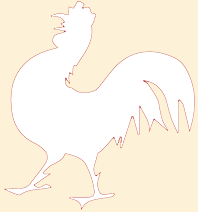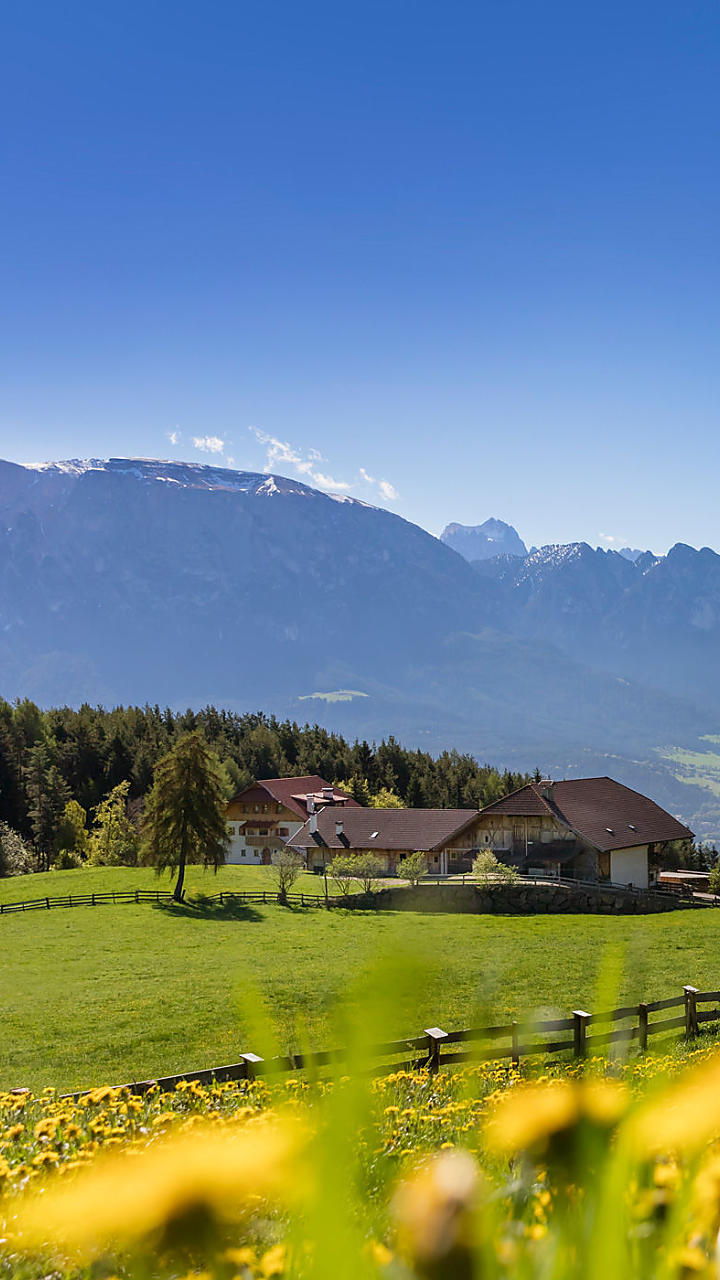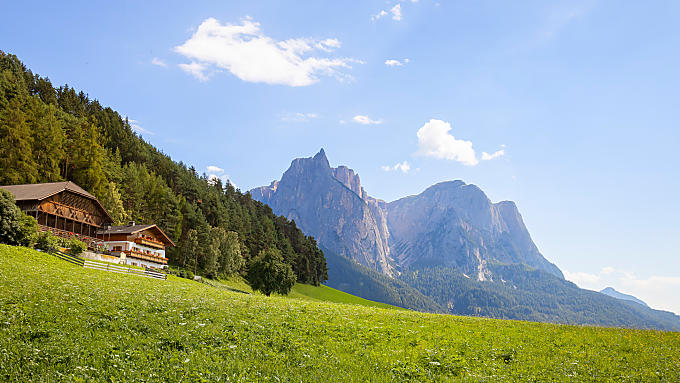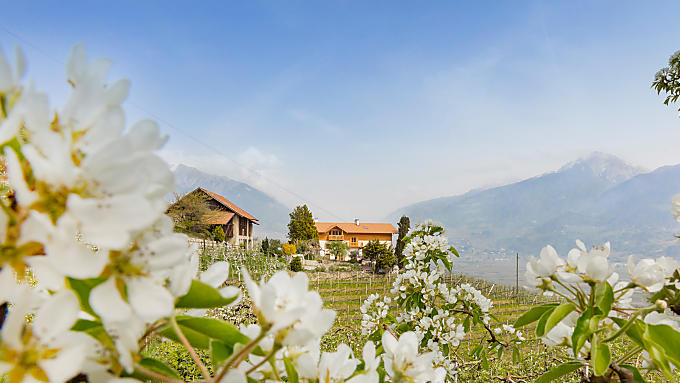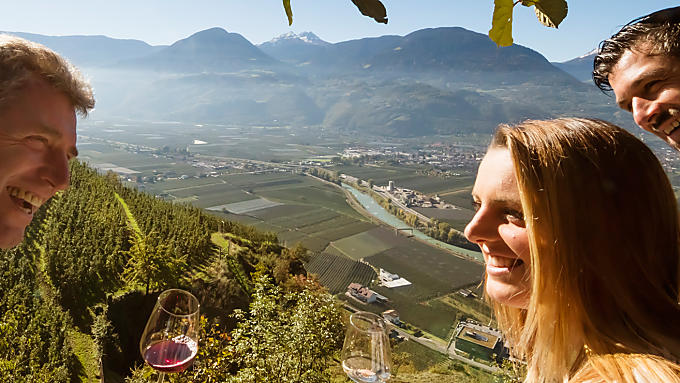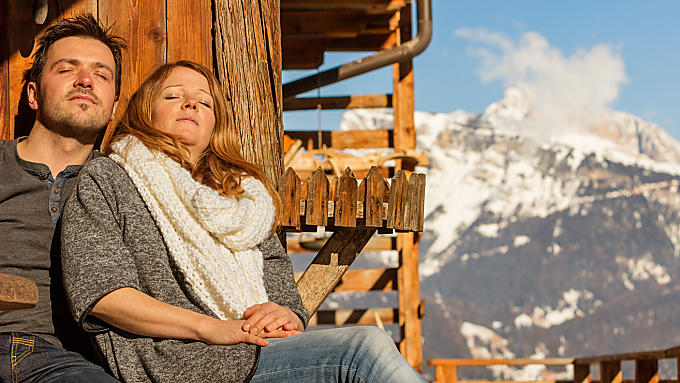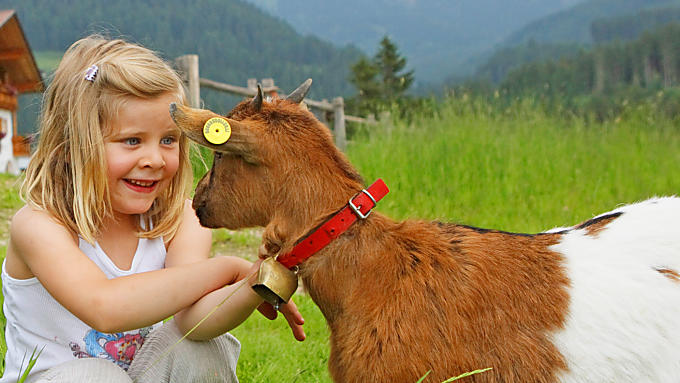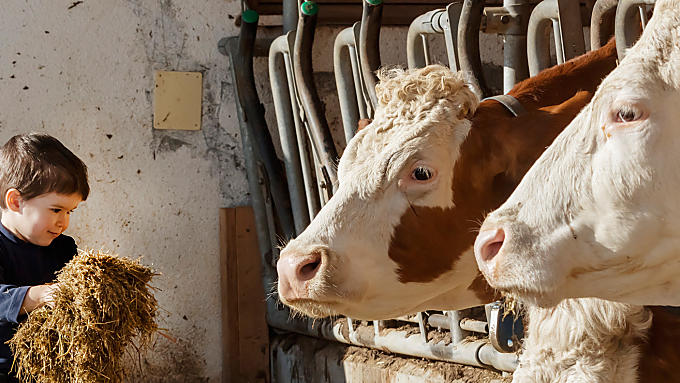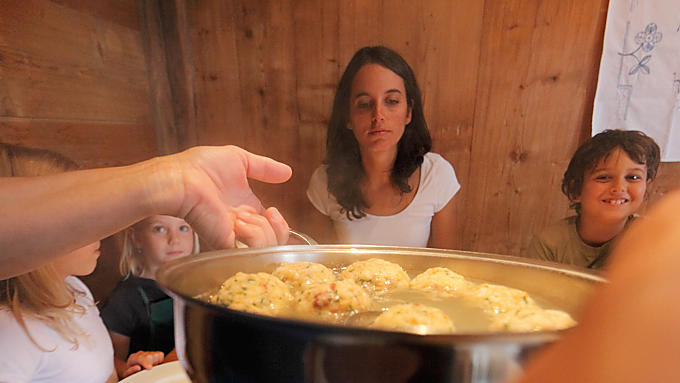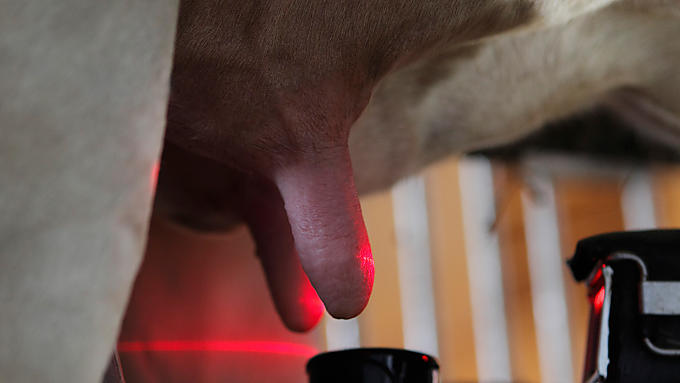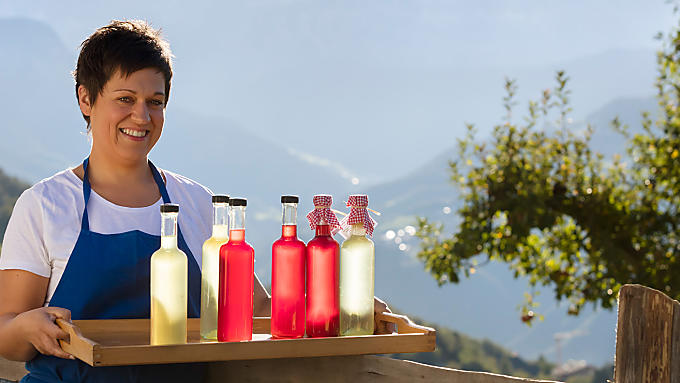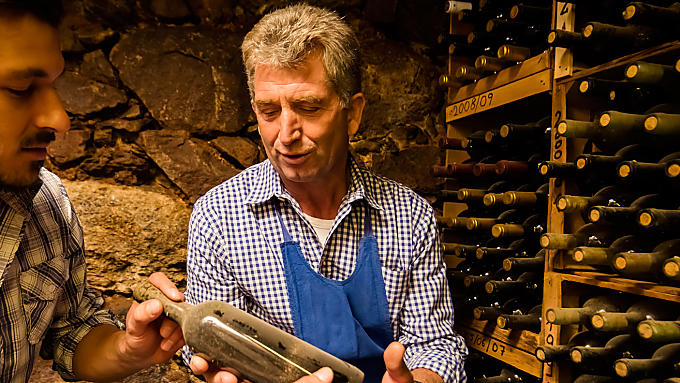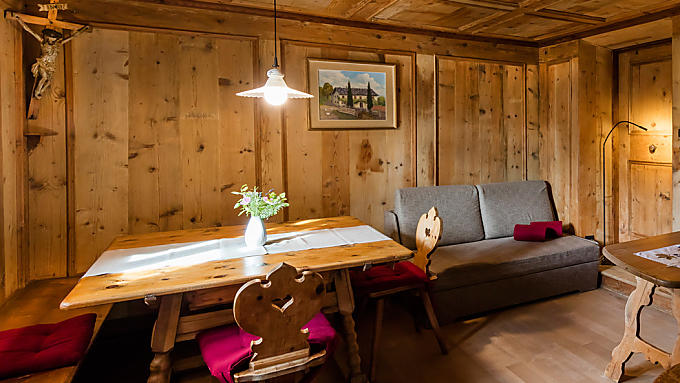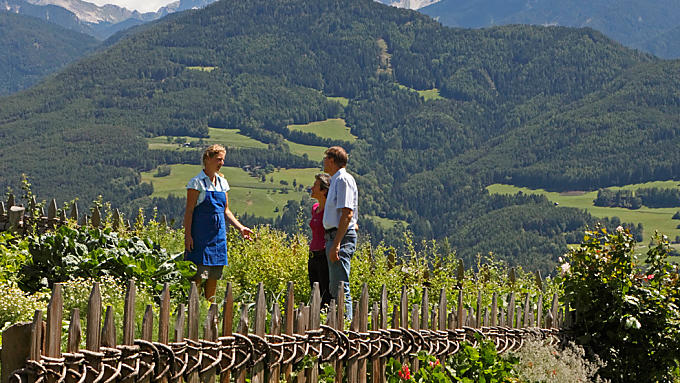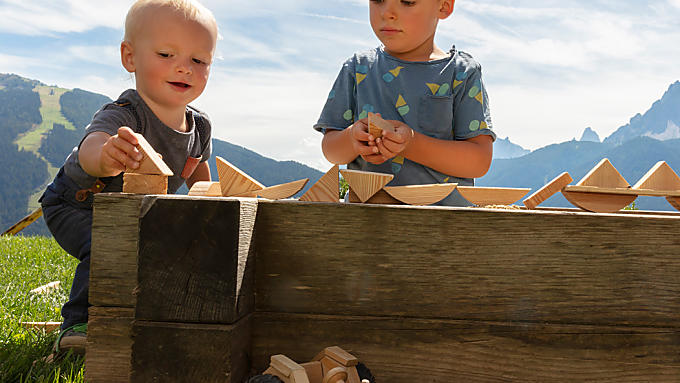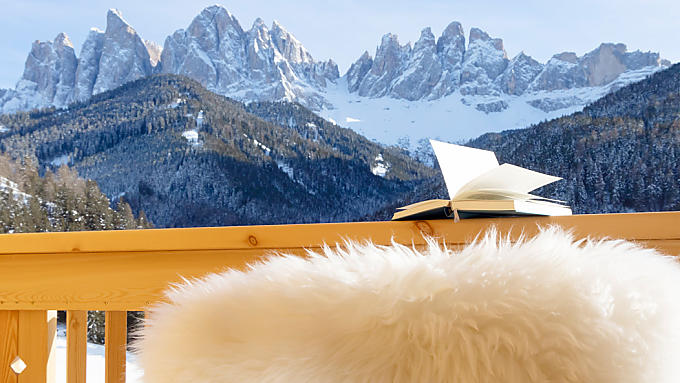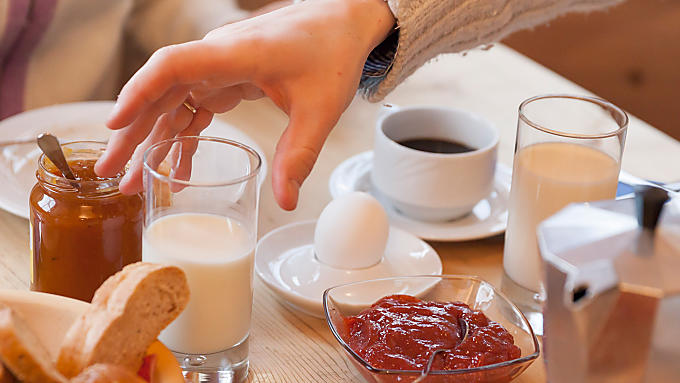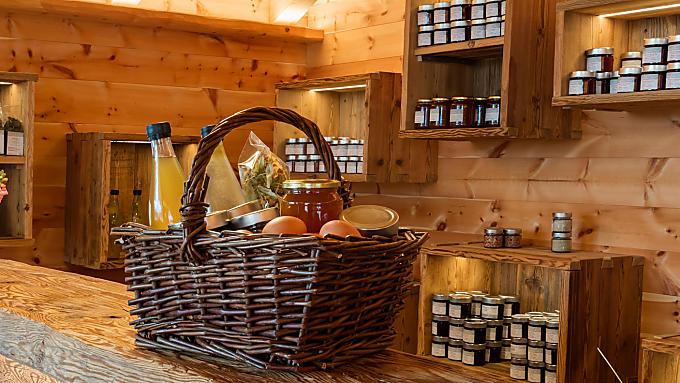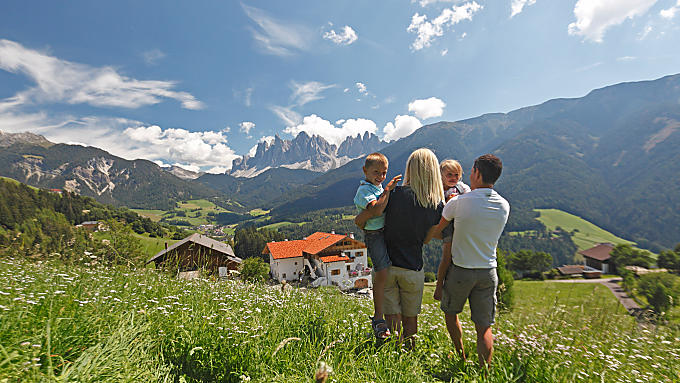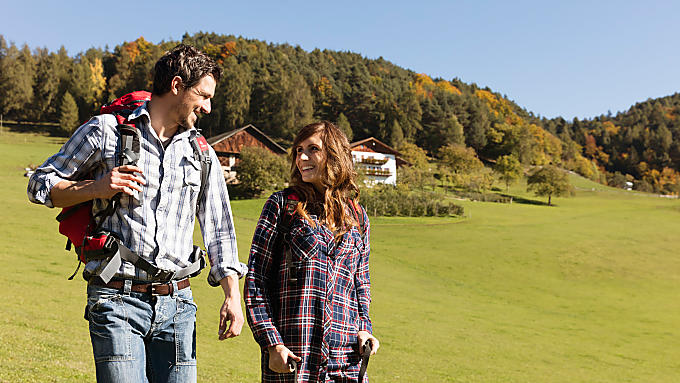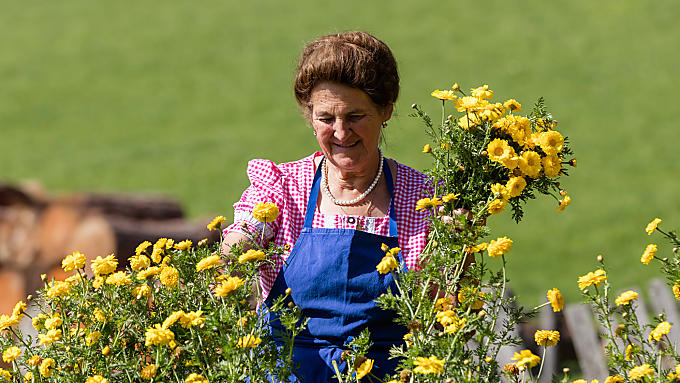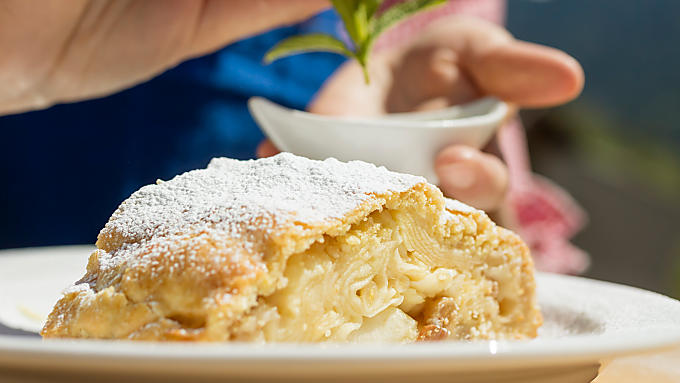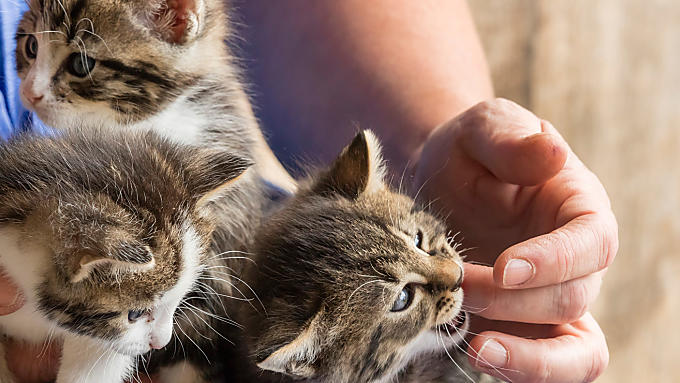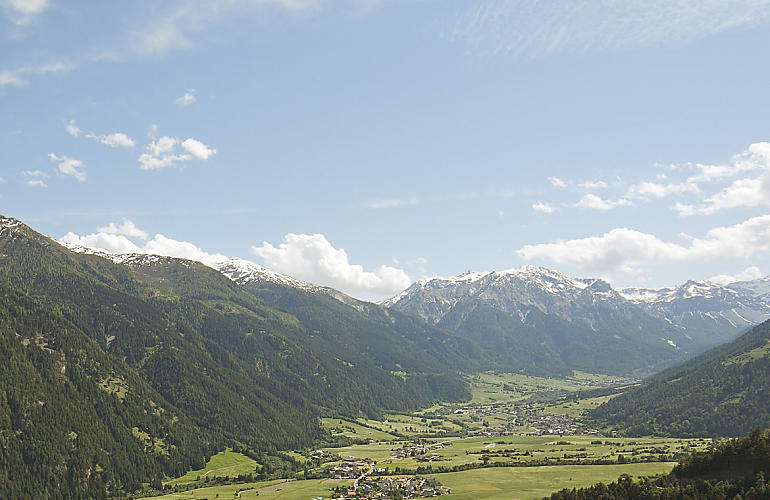
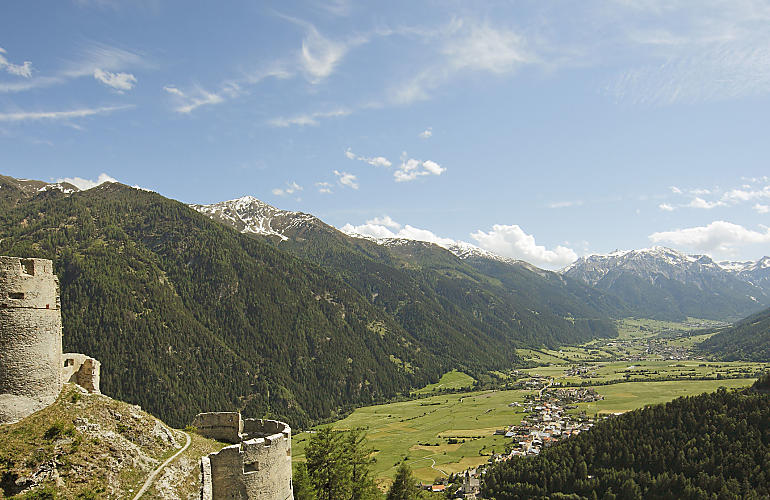
Cultural gems
Holiday location
Farm Holidays in Taufers in Münstertal
The legacy of the Middle Ages may be felt in the most westerly municipality of South Tyrol. On a Farm Holiday in Taufers in Münstertal, fortresses, abbeys and old farmsteads will tell of bygone days.
The village of Taufers, at the start of Münstertal valley, is situated on the border with the Rhaeto-Romanic part of Switzerland. Even if just one third of the valley lies on the South Tyrolean side and the rest on Swiss soil, Münstertal is part of South Tyrol in geographical terms. The unique features of this most westerly municipality of South Tyrol include a language border, which makes itself apparent here. Even if the inhabitants of Taufers and the neighbouring South Tyrolean municipalities of Mals, Glurns or Stilfs speak German, in nearby Müstair in Graubünden canton, Rhaeto-Romanic is the official language.
The legacy of the Middle Ages may be felt in the most westerly municipality of South Tyrol. On a Farm Holiday in Taufers in Münstertal, fortresses, abbeys and old farmsteads will tell of bygone days.
The village of Taufers, at the start of Münstertal valley, is situated on the border with the Rhaeto-Romanic part of Switzerland. Even if just one third of the valley lies on the South Tyrolean side and the rest on Swiss soil, Münstertal is part of South Tyrol in geographical terms. The unique features of this most westerly municipality of South Tyrol include a language border, which makes itself apparent here. Even if the inhabitants of Taufers and the neighbouring South Tyrolean municipalities of Mals, Glurns or Stilfs speak German, in nearby Müstair in Graubünden canton, Rhaeto-Romanic is the official language.
On the Romanesque road
Magnificent knights' halls, handsome fortresses and castles, picturesque villages: the wealth of buildings and works of art from the early Middle Ages in the Trentino-Südtirol region and neighbouring Engadin is great. An Interreg initiative set itself the task of connecting up the individual sites. 'Stairways to Heaven – the Romanesque Road in the Alps' is the name of the cultural walk project, which takes walkers on a journey featuring historical testimonies to the Romanesque period. One of a total of 51 sites is St. John's Church with its affiliated hospice in Taufers in Münstertal. It was built around 1220 by members of the Jesuit order. Its unusual central structure in the form of a Greek cross is rarely found in the Alpine area. The frescoes from the late Romanesque period, which stretch across the walls of the church and the hospice, are particularly impressive, as well as the figure of Christ on the northern outer wall. After the one found in Burg Hocheppan, it is considered to be the oldest depiction of Christ in Tyrol.
Interested parties can follow the Romanesque-themed road to the Convent of St. John in Müstair, which has been declared a UNESCO World Cultural Heritage Site, or head for Burgeis. Here, the highest-lying monastery in the Alps, the Benedictine Abbey of Marienberg, rises up above the village. A holiday flat or room on a farm in Taufers im Münstertal makes an ideal base.
On the Romanesque road
Magnificent knights' halls, handsome fortresses and castles, picturesque villages: the wealth of buildings and works of art from the early Middle Ages in the Trentino-Südtirol region and neighbouring Engadin is great. An Interreg initiative set itself the task of connecting up the individual sites. 'Stairways to Heaven – the Romanesque Road in the Alps' is the name of the cultural walk project, which takes walkers on a journey featuring historical testimonies to the Romanesque period. One of a total of 51 sites is St. John's Church with its affiliated hospice in Taufers in Münstertal. It was built around 1220 by members of the Jesuit order. Its unusual central structure in the form of a Greek cross is rarely found in the Alpine area. The frescoes from the late Romanesque period, which stretch across the walls of the church and the hospice, are particularly impressive, as well as the figure of Christ on the northern outer wall. After the one found in Burg Hocheppan, it is considered to be the oldest depiction of Christ in Tyrol.
Interested parties can follow the Romanesque-themed road to the Convent of St. John in Müstair, which has been declared a UNESCO World Cultural Heritage Site, or head for Burgeis. Here, the highest-lying monastery in the Alps, the Benedictine Abbey of Marienberg, rises up above the village. A holiday flat or room on a farm in Taufers im Münstertal makes an ideal base.
Farm search
Holiday farms in Taufers im Münstertal
3 reasons
A holiday in Taufers im Münstertal
Crossing the border to
Rhaeto-Romanic Switzerland
Ruined castles Rotund und
Reichenberg
Old churches,
a walking path
History and culture
On a Farm Holiday in Taufers in Münstertal, history and culture are constant companions. If you cast your eyes up to the two and three-thousand-metre-high mountain peaks of the Sesvenna, Ötztal and Ortler groups, you'll see a little collection of farms high above Münstertal valley.
On a Farm Holiday in Taufers in Münstertal, history and culture are constant companions. If you cast your eyes up to the two and three-thousand-metre-high mountain peaks of the Sesvenna, Ötztal and Ortler groups, you'll see a little collection of farms high above Münstertal valley.
Here, old traditions are preserved and still today the inhabitants of the farms predominantly make a living from agriculture. And there's more to be seen on the slope above Taufers in Münstertal – the ruins of Rotund and Reichenberg castles.
The ruins of Rotund, set at 1,500 metres above sea level, count as belonging to one of the highest-lying castles in Tyrol. It was only possible to access them by means of a drawbridge from the north side. The remaining three sides are rendered inaccessible by steep slopes. Around 150 metres beneath it, there is another ruined castle, Burg Reichenberg. Burg Rotund owes its byname of Oberreichenberg to this castle. Both were built around 900 by the Bishops of Chur and initially used as dwellings. In the 15th century, they were conquered by Friedrich IV of Austria, or Frederick of the Empty Pockets, in a battle against rebel nobles. Today, the ruins of Rotund are the property of the municipality of Taufers. A legend continues to persist about the ruins, telling of hidden treasure in its cellars.


